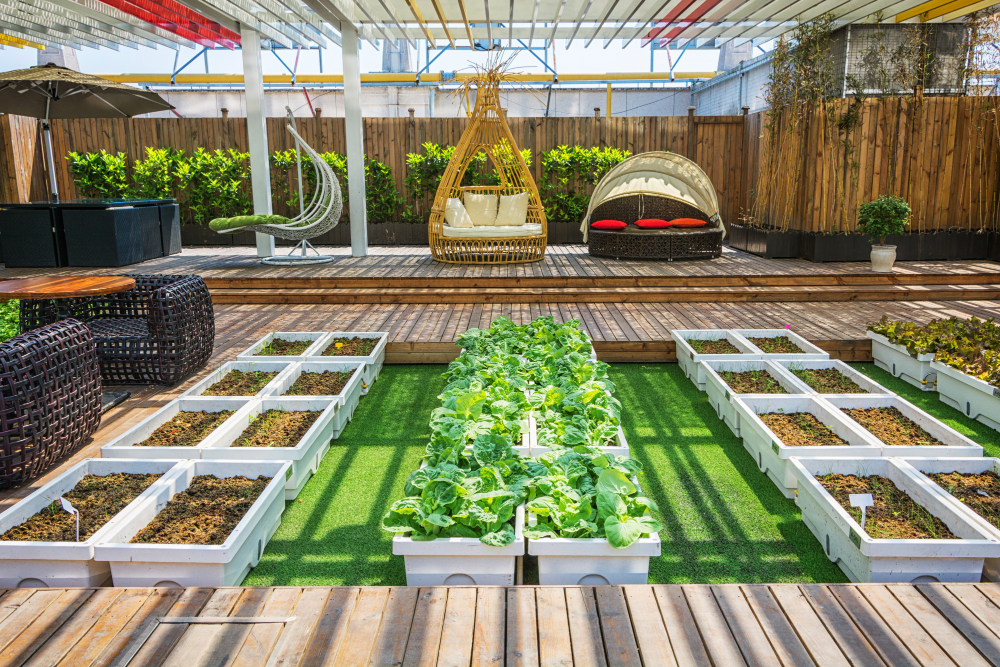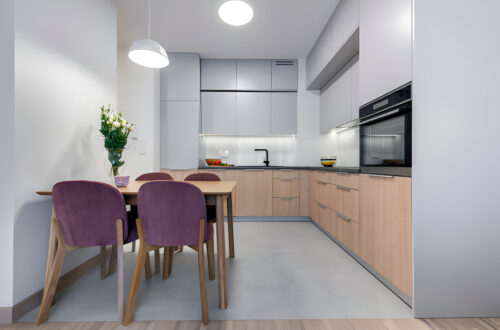Creating a peaceful retreat for your outdoor space can be an enjoyable and fulfilling project. You can create a serene retreat promoting relaxation and rejuvenation using natural elements, comfortable seating, personal touches, and adequate lighting. Excellent colors, like shades of blues and greens, are proven to decrease breathing rates, reduce blood pressure, and relax muscles. Incorporate these colors throughout your landscaping and interior spaces.
Incorporate Natural Elements
Nothing’s more relaxing than a backyard retreat filled with lush plants and greenery. This essential landscape design element can easily transform any backyard into a tranquil oasis. Backyard seating is also a must-have for relaxing. The desire to spend more time outside is heightened by comfortable seating, whether you choose a fire pit or a lounge set with soft outdoor sofas. Throw blankets and cushions will add a touch of warmth to those chilly evenings and mornings.
Enchanting garden pathways will take you on a calming journey through your backyard oasis, engaging all the senses. Plant herbs, flowers, and shrubs that smell good look beautiful or repel mosquitoes to create an inviting atmosphere for walking through your retreat. Incorporate sustainable hardscaping elements like recycled pavers and solar-powered lighting for an eco-conscious garden. These elements help to reduce your carbon footprint and create a backyard retreat that will indeed be an oasis.
Set the Atmosphere
The proper lighting, furniture, and personal touches can transform your relaxing oasis into a place that makes you feel calm and at peace. Creating a serene environment is essential to your mental health and wellness. Be sure to declutter, incorporate soothing colors and natural elements, add comfortable seating, create a focal point, personalize the space, and use adequate lighting. A water feature is a must for a Zen garden, as the sound of trickling water helps to drown out any noises from the outside world. A Japanese-style carp pond, a waterfall, or a stream are perfect additions to a zen garden.
Artwork can also help to set the mood for your relaxation garden. Choose pieces that inspire you, such as sea-inspired framed paintings or sculptures, to evoke the sense of serenity you’re striving for. Then, complete the look with lighting to illuminate pathways and highlight sculptures and trees. It is the ultimate finishing touch that local landscape companies mostly use to make a space come to life and truly become a place the owner wants to spend time in.
Designate a Space for Meditation
A meditation space should be dedicated to just that activity, so creating a divider is essential. Even a simple pathway can separate the meditation garden from the rest of the landscape, creating a feeling of tranquility and solitude. Accessory elements like low wooden bridges, moss-covered walls, stone pagoda lanterns, and a pond help bring the Zen aesthetic to life in your landscape design. For an eco-friendly water feature, try a zen waterfall or a trickling Asian-style fountain that helps drown out urban noise. Illuminating pathways, sculptures, and the meditative garden with lighting can elevate the evening experience. Add framed photos that align with your spiritual beliefs or motivations for meditation for a calming, personal touch.
Lighting
Incorporate lighting into your landscape design for a relaxing Zen garden. Choose a simple, low-wattage light or wall sconce that complements the style of your outdoor space. You can also use a few strategically placed lanterns to light the way for guests or highlight focal points such as a bamboo pavilion, carp pond, or beautiful trees. Moss is a popular addition to Zen gardens, adding a soft texture contrasting with the roughness of stones and gravel. Growing a variety of ferns, like tree ferns (Dryopteris) and hart’s-tongue ferns (Asplenium scolopendrium), can create an old-world, woodland look.
Consider a conifer such as blue atlas cedar (Cedrus atlantica) or Japanese maples if you’re planting trees. They grow slowly and create an old-world feel. Alternatively, you can use multi-stemmed shrubs such as paperbark maple (Acer griseum) or the ‘Natchez’ crape myrtle (Lagerstroemia x ‘Natchez,’ zones 5 to 8). Incorporate curved lines into your paths, fences, and walkways. They’re a nod to the Japanese practice of using curves to emphasize tranquility and asymmetry.
The Ultimate Guide to Choosing the Right Digital Agency for Your Business





